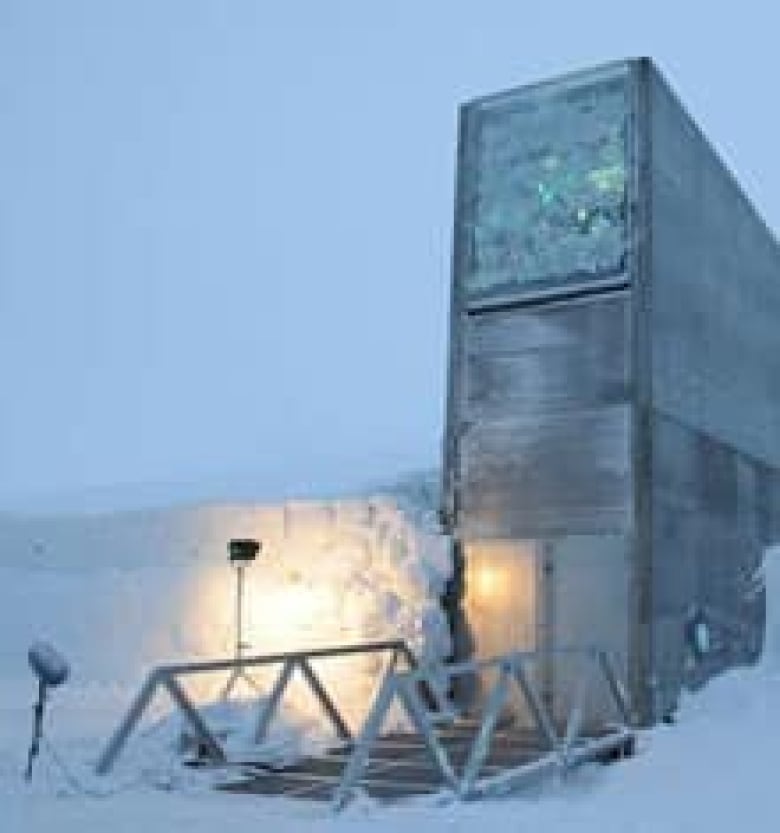Norway's ark: underground vault to house world's seeds
An underground vault buried deep in a mountain on a barren Arctic island halfway between mainland Norway and the North Pole may seem like an unlikely place to store samples of the world's plant life.
But for scientists trying to shield the world's seeds from climate change, earthquakes, war and other disasters, the "doomsday vault" on the island of Svalbard is an ideal location.

On Tuesday alone, seeds from 250,000distinct varieties of agricultural crops were placed in the vault.
Since each sample contains over 500 seeds, that amounts to more than100 million seeds deposited in the vault, said Cary Fowler, the executive director of the Global Crop Diversity Trust, a partner in the project.
He said the vault is necessary to ensure the survival of agriculture.
"What we've done is establish essentially a physical insurance policy here in Svalbard so we can ensure the safety of these seeds," said Fowler.
"If any of these varieties are lost in a normal seed bank that serves plant breeders or researchers, it won't mean extinction," he said.
The vault is a backup to the world's 1,400 other seed banks, including the Canadian Seed Gene Bank at Agriculture Canada in Saskatoon.
Some of the world'sseed banks, including those in Iraq, Afghanistan, Burundi and the Solomon Islands, have been virtually destroyed because of conflicts or natural disasters, said Fowler.
The seed bank in Saskatoon contributed 5,936 samples representing 94 botanical species to the Svalbard vault, with the majority being different varieties of barley and oats, said Axel Diederichsen, the research scientist and curator at the Canadian Seed Gene Bank.
Remote but accessible
The Svalbard facility is almost entirely underground, blasted out of permafrostwith a natural temperature of about-4 degrees C. About 130 metres above sea level, the facility's location takes into account the rising sea levels caused by global climate changes.
The Norwegian government owns the vault and paid $9.1 million US for its construction on the remote island, some 1,000 km from the North Pole. While remote, the island itself is accessible, with daily flights arriving at Longyearbyen Airport, just 1 km from the vault.
It's also designed to withstand earthquakes and even a direct nuclear strike and is intended to last hundreds and even thousands of years, said Fowler. While no facility could guarantee absolute safety, the Svalbard vault is about as safe as it could be, he said.
"We had the largest earthquake in Norwegian history last week (with a magnitude of 6.2) just off the coast of Svalbard, and it didn't even shake off the frost on the seed vault," said Fowler.
The facility itself consists of three separate underground chambers, each capable of storing 1.5 millionseed samples. Because the facility is designed as a long-term storage facility, the temperature is kept at a constant temperature of about -18 C.
Canada's seed bank in Saskatoon shares some similaritieswith the Svalbard vault, said Diederichsen, as it's in a cold place and not in an area prone to earthquakes or conflicts.
The seed bank holds samples of some 800 botanical species, but most of these samples can be found in other seed banks in the United States and elsewhere, said Diederichsen. Even though there is duplication of many seed crops, and Saskatoon is a low-risk area, he said an extra backup is still a good idea.
"There could be a fire, or technical problems, or an airplane could crash into our facility," he said. "It's not very likely, though."
Diversity key for cultivated plants
The bigger worldwide issue, however, is sustaining diversity.
That diversity is at risk around the world because of changes in agricultural practices. The UN Food and Agriculture Organization estimates that 75 per cent of the genetic diversity of agricultural crops has been lost in the past century. Experts have pointed out that China, for example, once grew some 10,000 varieties of wheat in the 1950s; this is now down to only about 1,000.
Diversity is important, particularly in agriculture, because without different strains, crops are more susceptible to diseases, pests or changes in climate, said Diederichsen.
Cultivated crops are more at risk than wild crops because having been bred by humans, they lack the natural ability to look after themselves, said Diederichsen.
"If your genetic sampling is too narrow, you risk food shortage problems like the potato famine in Ireland," he said. "It's very important to maintain diversity to keep crops healthy."












_(720p).jpg)


 OFFICIAL HD MUSIC VIDEO.jpg)
.jpg)



























































































